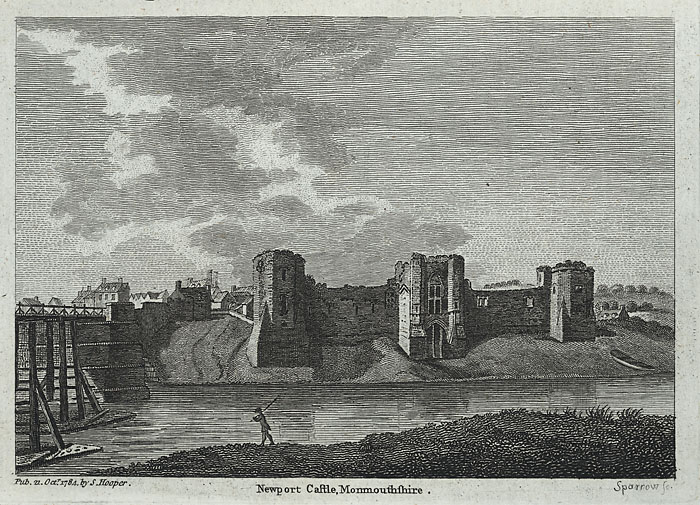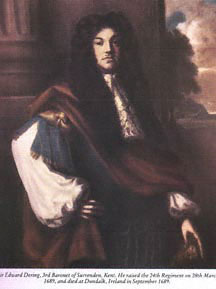|
Lower Dock Street Drill Hall, Newport
The Lower Dock Street Street drill hall is a former military installation in Newport, Wales. History The building was designed as the headquarters of the 3rd Monmouthshire Rifle Volunteer Corps and was completed in 1867. This unit combined with other units to become the 1st Monmouthshire Rifle Volunteer Corps in 1880 and evolved to become the 2nd Volunteer Battalion, The South Wales Borderers in 1885 and the 1st Battalion, The Monmouthshire Regiment The Monmouthshire Regiment was a Territorial infantry regiment of the British Army. Originating in units of rifle volunteers formed in Monmouthshire in 1859, the regiment served in the Second Anglo-Boer War and both World War I and World War II ... in 1908. The battalion was mobilised at the drill hall in August 1914 before being deployed to the Western Front. The battalion evolved to become the 68th (The Monmouthshire Regiment) Searchlight Regiment, Royal Artillery in 1940, the 609th Regiment, Royal Artillery (The Monmouthshire ... [...More Info...] [...Related Items...] OR: [Wikipedia] [Google] [Baidu] |
Newport, Wales
Newport ( cy, Casnewydd; ) is a city and Local government in Wales#Principal areas, county borough in Wales, situated on the River Usk close to its confluence with the Severn Estuary, northeast of Cardiff. With a population of 145,700 at the 2011 census, Newport is the third-largest authority with City status in the United Kingdom, city status in Wales, and seventh List of Welsh principal areas, most populous overall. Newport became a unitary authority in 1996 and forms part of the Cardiff-Newport metropolitan area. Newport was the site of the last large-scale armed insurrection in Great Britain, the Newport Rising of 1839. Newport has been a port since medieval times when the first Newport Castle was built by the Normans. The town outgrew the earlier Roman Britain, Roman town of Caerleon, immediately upstream and now part of the borough. Newport gained its first Municipal charter, charter in 1314. It grew significantly in the 19th century when its port became the focus of Coa ... [...More Info...] [...Related Items...] OR: [Wikipedia] [Google] [Baidu] |
War Office
The War Office was a department of the British Government responsible for the administration of the British Army between 1857 and 1964, when its functions were transferred to the new Ministry of Defence (MoD). This article contains text from this source, which is available under th Open Government Licence v3.0 © Crown copyright It was equivalent to the Admiralty, responsible for the Royal Navy (RN), and (much later) the Air Ministry, which oversaw the Royal Air Force (RAF). The name 'War Office' is also given to the former home of the department, located at the junction of Horse Guards Avenue and Whitehall in central London. The landmark building was sold on 1 March 2016 by HM Government for more than £350 million, on a 250 year lease for conversion into a luxury hotel and residential apartments. Prior to 1855, 'War Office' signified the office of the Secretary at War. In the 17th and 18th centuries, a number of independent offices and individuals were re ... [...More Info...] [...Related Items...] OR: [Wikipedia] [Google] [Baidu] |
South Wales Borderers
The South Wales Borderers was a line infantry regiment of the British Army in existence for 280 years. It came into existence in England in 1689, as Sir Edward Dering's Regiment of Foot, and afterwards had a variety of names and headquarters. In 1782, it became the 24th Regiment of Foot, and had its depot in Warwickshire. Based at Brecon from 1873, the regiment recruited from the border counties of Brecknockshire, Monmouthshire, and Herefordshire. It was not called the South Wales Borderers until the Childers Reforms of 1881. The regiment served in a great many conflicts, including the American War of Independence, various conflicts in India, the Zulu War, Second Boer War, and World War I and World War II. In 1969 the regiment was amalgamated with the Welch Regiment to form the Royal Regiment of Wales. History Early history The regiment was formed by Sir Edward Dering, 3rd Baronet as Sir Edward Dering's Regiment of Foot in 1689, becoming known, like other regiments, by the ... [...More Info...] [...Related Items...] OR: [Wikipedia] [Google] [Baidu] |
Monmouthshire Regiment
The Monmouthshire Regiment was a Territorial infantry regiment of the British Army. Originating in units of rifle volunteers formed in Monmouthshire in 1859, the regiment served in the Second Anglo-Boer War and both World War I and World War II before losing its separate identity in 1967. Origins Units of rifle volunteers were formed throughout Great Britain in 1859 and 1860 in response to a perceived threat of invasion by France following the Orsini affair. The raising of such units was to be authorised by lieutenants of counties in England, Wales and Scotland. The first corps in Monmouthshire was raised on 9 September 1859.Frederick, pp. 171–3. By 1880 the various small corps in the county had been consolidated into three battalion-sized units, the 1st, 2nd and 3rd Monmouthshire Rifle Volunteer Corps. In the following year the Childers Reforms of line infantry saw the three Monmouthshire corps becoming volunteer battalions of the regular South Wales Borderers. In 1885 they ... [...More Info...] [...Related Items...] OR: [Wikipedia] [Google] [Baidu] |
Western Front (World War I)
The Western Front was one of the main theatres of war during the First World War. Following the outbreak of war in August 1914, the German Army opened the Western Front by invading Luxembourg and Belgium, then gaining military control of important industrial regions in France. The German advance was halted with the Battle of the Marne. Following the Race to the Sea, both sides dug in along a meandering line of fortified trenches, stretching from the North Sea to the Swiss frontier with France, which changed little except during early 1917 and in 1918. Between 1915 and 1917 there were several offensives along this front. The attacks employed massive artillery bombardments and massed infantry advances. Entrenchments, machine gun emplacements, barbed wire and artillery repeatedly inflicted severe casualties during attacks and counter-attacks and no significant advances were made. Among the most costly of these offensives were the Battle of Verdun, in 1916, with a combined 700,000 ... [...More Info...] [...Related Items...] OR: [Wikipedia] [Google] [Baidu] |
104th Regiment Royal Artillery
104 Regiment Royal Artillery is part of the British Army Reserve and has sub-units throughout Wales and the West Midlands of England. It is equipped with the 105mm Light Gun. History The regiment was formed as 104 Light Air Defence Regiment Royal Artillery (Volunteers) in 1967. Its units were 210 (Staffordshire) Light Air Defence Battery at Wolverhampton and 211 (South Wales) Light Air Defence Battery at Newport. In 1969, 214 (Worcestershire) Light Air Defence Battery at Malvern joined the regiment. It was renamed 104 Air Defence Regiment Royal Artillery (Volunteers) in 1976. In 1986, 214 Battery was formed at Worcester and 217 (County of Gwent) Air Defence Battery was formed at Cwmbran: both joined the regiment. In 1992 217 Battery was merged into Headquarters Battery and in 1993 the regiment was renamed 104 Regiment Royal Artillery (Volunteers). Meanwhile, 210 Battery moved to 106th (Yeomanry) Regiment Royal Artillery. Under Army 2020, 266 (Gloucestershire Volunteer Artill ... [...More Info...] [...Related Items...] OR: [Wikipedia] [Google] [Baidu] |
Raglan Barracks, Newport
Raglan Barracks is a military installation at Barrack Hill in Allt-yr-yn in Newport, Wales. History The barracks were built as a cavalry barracks and completed in 1845. During the First World War they were known as the Cavalry Barracks and served as the 4th cavalry depot providing accommodation for the 2nd Dragoon Guards (Queen's Bays), the 3rd Dragoon Guards, the 4th Royal Irish Dragoon Guards, the Carabiniers (6th Dragoon Guards), the 7th Dragoon Guards and the 6th (Inniskilling) Dragoons. The barracks were renamed Raglan Barracks after FitzRoy Somerset, 1st Baron Raglan in 1963. Units The barracks are now home to: * Headquarters, 104th Regiment Royal Artillery, * Corps of Drums of 3rd Battalion, Royal Welsh. * Detachment, 4th Battalion the Parachute Regiment * E Squadron 21 SAS (MAB 4), * 711 MI Section, 7 Military Intelligence Battalion * Band of the Royal Welsh The Royal Welsh (R WELSH) ( cy, Y Cymry Brenhinol) is an armoured infantry regiment of the Br ... [...More Info...] [...Related Items...] OR: [Wikipedia] [Google] [Baidu] |
Grade II Listed Buildings In Newport, Wales
Grade most commonly refers to: * Grade (education), a measurement of a student's performance * Grade, the number of the year a student has reached in a given educational stage * Grade (slope), the steepness of a slope Grade or grading may also refer to: Music * Grade (music), a formally assessed level of profiency in a musical instrument * Grade (band), punk rock band * Grades (producer), British electronic dance music producer and DJ Science and technology Biology and medicine * Grading (tumors), a measure of the aggressiveness of a tumor in medicine * The Grading of Recommendations Assessment, Development and Evaluation (GRADE) approach * Evolutionary grade, a paraphyletic group of organisms Geology * Graded bedding, a description of the variation in grain size through a bed in a sedimentary rock * Metamorphic grade, an indicatation of the degree of metamorphism of rocks * Ore grade, a measure that describes the concentration of a valuable natural material in the surroundi ... [...More Info...] [...Related Items...] OR: [Wikipedia] [Google] [Baidu] |



